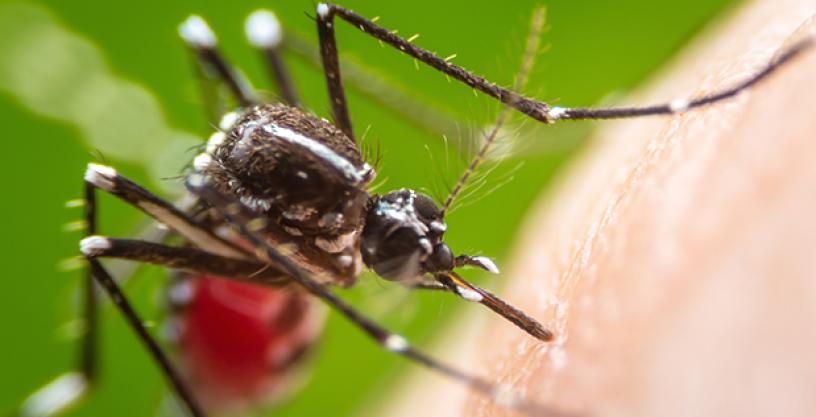
Researchers aim to use modulated human skin microbiomes to prevent biting by common disease vector
Feb 16, 2022
Mosquitoes are vectors of a number of diseases, and are responsible for the majority of insect bites worldwide.1 The insects are attracted to humans, in part, by chemicals emitted in human breath. It is the heat and volatile molecules from the human skin microbiome, however, that direct mosquitoes to specific feeding sites on the body. The ReVector program aims to precisely, safely, and efficiently reduce mosquito attraction and biting, and, subsequently, to help maintain the health of military personnel operating in disease-endemic regions. In its first phase, ReVector performers developed technologies to modify human skin microbes and modulate the volatiles that these microbiomes produce. The teams tested petri dish formulations of their modified microbe communities with three mosquito types to gauge changes in attraction.
The program is now entering its second phase with performers from Stanford University.
“Phase 1 of the program focused on identifying microbial or metabolic targets that produce molecules relevant to mosquito attraction and feeding, and designing microbiome alterations to reduce said attraction,” noted Dr. Linda Chrisey, ReVector program manager. “In Phase 2, the team plans to advance to testing in animal models and more complex microbiome communities.”
Ultimately, ReVector seeks to develop topical formulations that could be applied shortly before a mission with minimal equipment or training, and last for at least two weeks without reapplication, offering improved, sustained protection against disease vectors.
As a ReVector performer, Stanford University researchers will continue to engage with U.S. government and DoD stakeholders throughout the program lifecycle. All research funded by the program will be subject to regular review by both an independent laboratory and regulatory agencies, including the U.S. Food and Drug Administration (FDA) and, if necessary, the Environmental Protection Agency (EPA), to ensure that technologies are effective and do not pose a threat to humans or the environment.
Additional details of the program schedule and metrics are available in the broad agency announcement at https://govtribe.com/opportunity/federal-contract-opportunity/revector-hr001119s0056.
1 Jesus Seda and Shawn Horrall.Mosquito Bites. https://www.ncbi.nlm.nih.gov/books/NBK539915/.
# # #
Media with inquiries should contact DARPA Public Affairs at outreach@darpa.mil
Associated images posted on www.darpa.mil and video posted at www.youtube.com/darpatv may be reused according to the terms of the DARPA User Agreement, available here: http://go.usa.gov/cuTXR.
Tweet @darpa
